Join us as we reminisce about the places DeWetsWild visited while exploring Southern Africa’s wild places in 2024!
May 2025 be a year to remember for all the best reasons. Happy New Year, everyone!

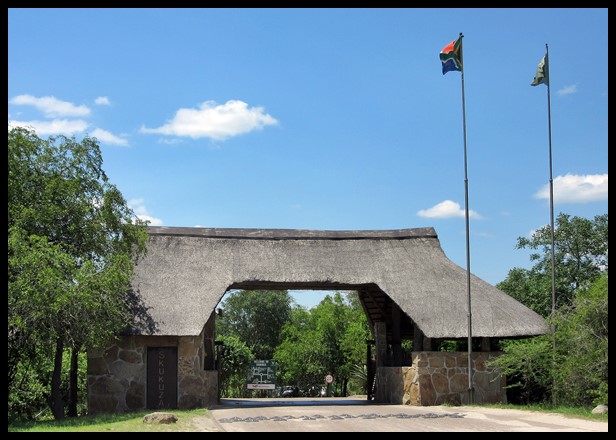
Join us as we reminisce about the places DeWetsWild visited while exploring Southern Africa’s wild places in 2024!
May 2025 be a year to remember for all the best reasons. Happy New Year, everyone!
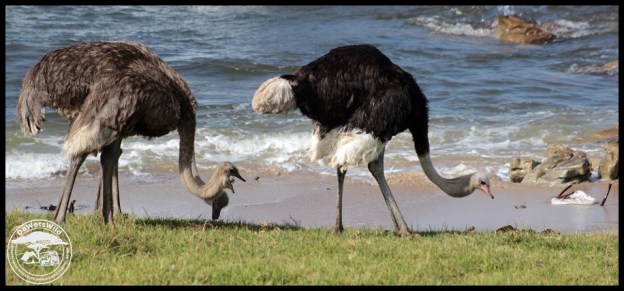
Earlier in October I had the immense pleasure of hosting long-time blogging friend John Steiner (of Journeys with Johnbo), his wife Lynn, John’s niece Patricia and her husband Gary on a tour of Cape Town and the Kruger National Park.
On our first day together I spent quite a bit of time with the Steiners and Broesders exploring every corner of the Cape of Good Hope section of the Table Mountain National Park. We took the funicular up to the lighthouse at Cape Point, had lunch at the Two Oceans Restaurant, and took in all the scenic sights and interesting wildlife from the excellent road network.
I am a fully accredited and legally registered tour guide (with all the necessary insurance, professional drivers license and first aid certification) – don’t hesitate to reach out if you’d like me to arrange a guided tour of Cape Town’s natural attractions and the rest of South Africa for you as well.
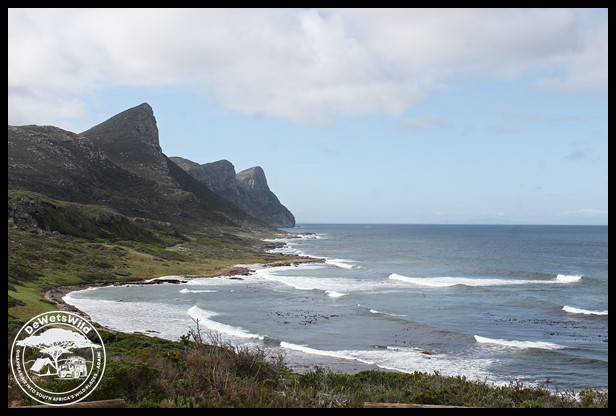
I am currently touring some of South Africa’s most beautiful spots with someone who has been a great friend of DeWetsWild for many years, and what a privilege it is! We’re currently on the Cape Peninsula where we’ve based ourselves at the Quayside Hotel in Simon’s Town and today made excursions to the Boulders Penguin Colony and the Cape of Good Hope.

Cape Town is a city more richly endowed with scenic splendour than most others in the world, and almost all of the most beautiful spots in and around the city are protected in the Table Mountain National Park. And while Table Mountain itself is undoubtedly worthy of its spot among the wonders of the natural world, it is in the Cape of Good Hope section of the national park that visitors can get the most authentic taste of the Cape Peninsula’s other natural wonders, of which there are many!
The Cape Peninsula is world renowned for its rich variety of unique plants – about 2,300 species are found here and many of them occur nowhere else on earth.
More than 300 bird species have been recorded in the Table Mountain National Park and the Cape of Good Hope section of the Park is an excellent place in which to search for most of them.
There may not be any of the famed “Big 5” African animals roaming freely over the Cape Peninsula these days, but there’s still a very rich and diverse population of insects, reptiles, amphibians and mammals that inhabit the area along with all those birds.
While exploring the Table Mountain National Park and Cape Town during December 2022, we based ourselves at the Eland Cottage inside the Cape of Good Hope section of the Park. Eland Cottage has two lounges, a fully equipped kitchen, dining room, bathroom, three bedrooms, outside shower and lapa! In addition to Eland visitors to this part of the Park can also book the Duiker Cottage, similar to Eland, and Olifantsbos House – a luxury unit with an exclusive setting right on the beach. DeWetsWild will gladly assist you with bookings in these units, other accommodation options in the Table Mountain National Park, at one of five hotels in metropolitan Cape Town or at the Goudini Spa in the Cape Winelands if you are planning a visit to Cape Town and surrounds.
At Simonstown, just a stone’s throw north of the Cape of Good Hope, is the Boulders Beach where African Penguins breed right at the urban edge. Have a read here if you’d like to know more about this special place. While we again spent a few moments with the penguins at Boulders during our December 2022 trip to Cape Town we will soon tell you more about another colony of these charismatic birds that you should seriously consider also including in your visit to the Western Cape.

Join us for a look back at the wonderfully wild South African destinations we visited during 2022. May 2023 be a blessed year for you and your family, memorable for all the best reasons.

We’ve spent the whole day exploring Cape Town’s scenic attractions – from Chapman’s Peak Drive to a seal tour out of Hout Bay, to a picnic in Tokai and a ride up-and-down Cape Point with the Flying Dutchman funicular (and many points in between). Lots to tell you about when we’re back home!
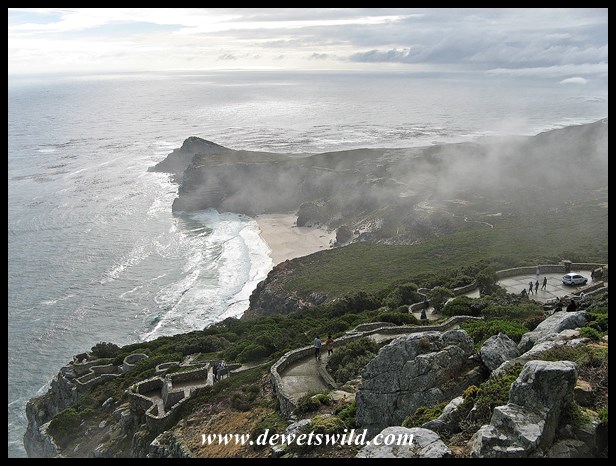
Archaeological investigations indicate that the Cape Peninsula, the mountainous promontory that stretches for over 50km from Table Mountain in the north to Cape Point in the south at Africa’s south-westernmost extremity, has been inhabited intermittently by humans since the Early Stone Age, roughly 600,000 years ago. First described as the “Cape of Storms” by Portuguese explorer Bartolomeu Dias, the first known European to navigate around the southern tip of Africa in March 1488, and then given the moniker “Cape of Good Hope” by King João II of Portugal as Dias’s “discovery” opened the possibility of an oceanic trade route to India and the Far East, the most flattering description for this stretch of rugged coastline came from English Admiral Sir Francis Drake in 1580, when he referred to it as “a most stately thing and the fairest cape we saw in the whole circumference of the earth“. Today, two “padrãos” – replicas of the limestone pillars erected by Portuguese explorers on their voyages to signify Portuguese and Christian sovereignty and erected in 1965, commemorate two of those erstwhile explorers: Dias and Vasco da Gama, the first to reach India from Europe around the African coast.
In 1939, the Cape of Good Hope Nature Reserve was established on the southern tip of the Cape Peninsula. In 1998, the reserve’s 7,750ha was incorporated into the Cape Peninsula National Park, which was renamed the Table Mountain National Park in 2004. The land area of the Park covers a total of almost 300km², with a further 975km² of the ocean protected in a marine reserve. Managing this National Park with Cape Town and its suburbs, a city of 3,7-million people, right on the doorstep must be a daunting task and with over 4-million visitors annually, the Table Mountain National Park is one of South Africa’s top tourist attractions.
Cape Point consists of dramatic sea cliffs, among the highest in the world, jutting into the Atlantic Ocean at the tip of the Peninsula. On a clear day the view from the top is nothing short of spectacular. The “Flying Dutchman” Funicular (named for Captain Hendrick van der Decken’s ghost ship still plying these waters in stormy seas) is available to take visitors up to the old lighthouse and viewpoints and back down, though there’s always the option of hiking the 800m distance.
Commonly described as Fynbos, the natural vegetation of the Table MountaIn National Park is an integral component of the Cape Floral Kingdom, which, with an amazing 9,004 plant species is the smallest of only 6 plant kingdoms recognized in the world and a UNESCO Natural World Heritage Site. There are over 2,285 indigenous flowering plant species on the Cape Peninsula – compare that to fewer than 1,500 species indigenous to the entire British Isles! Inside the Cape of Good Hope section of the Park alone, over 1,200 plant species have been identified.
The Cape Peninsula may be world renowned for its awesome scenery, but it is also home to a wide variety of birds (303 species on land and sea), mammals (58 terrestrial and 36 marine species) , reptiles (64 species), amphibians (17 species) and fish (including the Great White Shark), not to mention countless invertebrates.
Visitors may overnight inside the Cape of Good Hope section of the National Park at one of three cottages (Olifantsbos, Eland & Duiker) or on the Hoerikwaggo Cape of Good Hope Trail. An extensive network of tarred roads lead to several viewpoints and picnic sites, two of which have tidal pools as swimming in the sea at many of the beaches here is considered rather risky, while a restaurant and curio shops can be found at Cape Point.
We spent two nights at Eland Cottage at the Cape of Good Hope during our epic December holidays in eight of South Africa’s national parks.
The Cape of Good Hope section of the Table Mountain National Park lies to the south of the city of Cape Town, and can be approached either from the town of Kommetjie along the Atlantic seaboard (road M65), or through Simon’s Town on the False Bay coast (road M4 / M66).
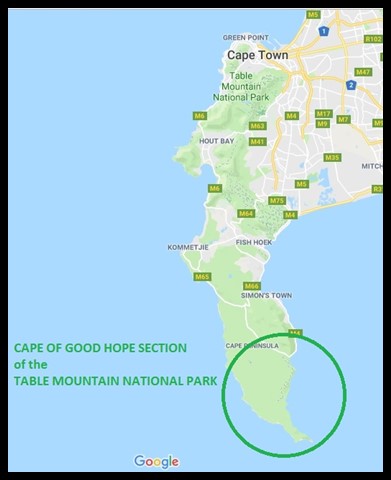

Looking back at the places we stayed at during another year of enjoying South Africa’s beautiful wild places.
—–
If you enjoy de Wets Wild as much as we enjoy sharing our love for South Africa’s wild places and their denizens with you, please vote for us in the 2017 South African Blog Awards.
We’ve entered the categories for “Best Travel Blog” and “Best Environmental Blog”, and you are allowed to vote for us in both. Clicking on the badge below will bring you to the voting site. After voting, you’ll receive an e-mail requiring you to click on a link to confirm your votes.
Thank you very much for your support!
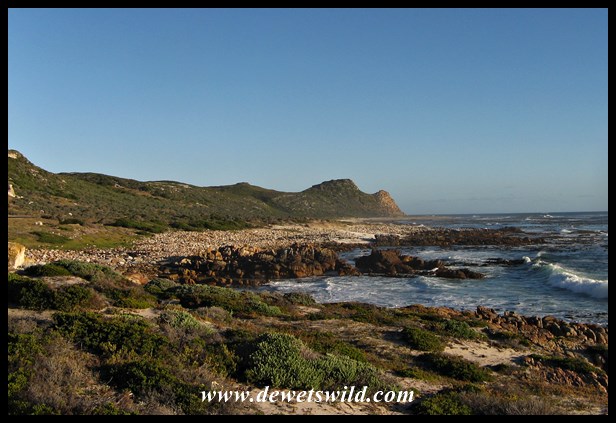
According to Sir Francis Drake, a famous 16th century English admiral, the Cape of Good Hope “is a most stately thing and the fairest cape we saw in the whole circumference of the earth“.
We couldn’t agree more.
We’ve arrived at the next destination on our summer holidays: The Cape of Good Hope in the Table Mountain National Park.
—–
If you enjoy de Wets Wild as much as we enjoy sharing our love for South Africa’s wild places and their denizens with you, please vote for us in the 2017 South African Blog Awards.
We’ve entered the categories for “Best Travel Blog” and “Best Environmental Blog”, and you are allowed to vote for us in both. Clicking on the badge below will bring you to the voting site. After voting, you’ll receive an e-mail requiring you to click on a link to confirm your votes.
Thank you very much for your support!